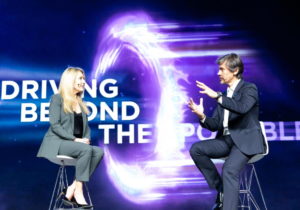By Jacqui Barker, Head of Commercial at drivvn
The pandemic has proved to be a watershed for many industries, and the automotive sector has taken the opportunity to fast-track long-held digital plans and reengineer its relationship with the customer.
Since March 2020, automotive manufacturers, retailers, and suppliers have moved quickly to accelerate the online customer journey, and covid has pushed these companies and their customers over a digital tipping point. The ramifications for the sector will be long-lasting.
Data from drivvn shows that online behaviour mimics that seen in dealerships with less time spent browsing as customers arrived at websites having done their research and ready to buy. The number of people who completed online reservations doubled during the first lockdown against the same period the previous year.
To enable the pace of change, a more flexible and modular approach to digital retailing is required. Success depends on having the right tools in place at the right time and being able to adapt to changing customer demand and business models quickly. In addition, enquiries must be followed up quickly for the lead to convert, and the customer has a seamless experience.
One unforeseen benefit of the move to digital retail is women are better represented in the marketing and digital operations of manufacturers and dealers, which, as a result, has given women far more influence over the retail experience than ever before.
The impact of this move cannot be overstated. Data shows women convert online at twice the rate of men and account for 60% of all purchases. There are many reasons for this, not least a well-documented aversion to the showroom environment.
The impact of a more gender-balanced view of automotive retail will be far-reaching. It should be seen as a positive move that will create a better car buying experience for everyone.
The online purchase process doesn’t discriminate. Most people who buy cars don’t live and breathe the industry and don’t readily know their PHEV from WLTP. In an environment where a car purchase can be personalised, the effect is to democratise the process. Ultimately, this will result in greater car sales.
Women want a transparent retail experience that can be completed in their own time and may dip in and out of the purchase process before completing the sale.
Customer service is also improving across the automotive industry. The use of AI and machine learning means questions can be answered immediately, around the clock. When buyers want someone to speak to, the resource is there.
There is no doubt that while the pandemic has accelerated digital disruption by several years, what sits at the heart of all the programmes is a desire to give the customer the best experience, whether online or in the dealership. Operations must have the flexibility to shape around the customer, whatever their gender.
There is plenty of evidence of rapid change. The number of people who completed online reservations doubled during the first lockdown against the same period the previous year.
As customer behaviour continues to evolve, it will be necessary for the manufacturers and dealers to anticipate change and adapt to the process, and women will have a stronger voice in these changes than ever before.
Customers still look to visit their local car showroom but drivvn data points to an omnichannel future where buyers still value the experience of visiting a retailer but may choose to complete more of the journey remotely.
Car buyers also expect the shift between virtual and physical retail environments to be seamless. While technology and data have a key role to play in the process, it will be important for retailers to match the tone of the digital journey.
The changes we see emerging from the pandemic have seen automotive manufacturers redefine their relationship with retailers and customers. A closer relationship and a more granular view of the customer is essential to driving the subscription-based mobility partner that many are working toward. Clearly, digital has a significant part to play in enabling this change.
Big challenges and opportunities are here for the industry. It will be better placed to succeed if the gender balance can be further improved. Both manufacturers and retailers are taking big steps to address this issue, and it is already seeing the benefits.
But gender balance is about more than just percentages. It also requires culture change, and that begins by giving everyone around the table a voice. Change can happen quickly with the correct support and infrastructure in areas like mentoring, training and flexible working.











